Igloo Ice Machine Instructions: A Comprehensive Guide
This comprehensive guide provides easy-to-follow instructions for your Igloo ice maker. It covers safety precautions, initial setup, troubleshooting, maintenance, and even basic repairs, ensuring efficient ice production. Let’s dive in and get started!
Igloo ice makers offer a convenient way to produce ice at home, in the office, or even while camping. These portable appliances eliminate the need for ice trays and provide a continuous supply of ice on demand. Understanding the basic functionality and features of your Igloo ice maker is crucial for optimal performance and longevity. From countertop models to larger units, Igloo offers a variety of ice makers to suit different needs and preferences. This guide will walk you through everything you need to know about operating and maintaining your Igloo ice maker, ensuring you always have fresh ice ready when you need it. We’ll cover setup, troubleshooting, and cleaning procedures to keep your machine running smoothly for years to come. Whether you’re a first-time user or a seasoned pro, this guide has something for everyone.
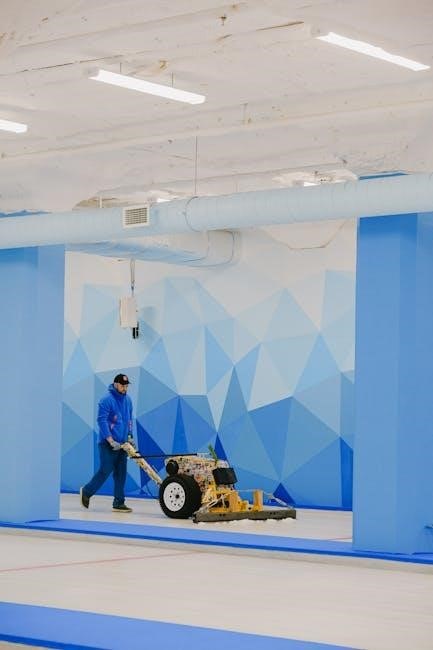
Understanding Safety Precautions
Prioritizing safety is crucial when operating any electrical appliance. This section outlines essential safety precautions for your Igloo ice maker to prevent accidents, ensure proper usage, and prolong the machine’s lifespan.
Safety During Installation
Before plugging in your Igloo ice maker, carefully inspect it for any damage incurred during shipping. Ensure the appliance is placed on a stable, level surface to prevent tipping or malfunctions. Keep the ice maker away from water sources to reduce the risk of electric shock. Use a properly grounded outlet that matches the unit’s voltage requirements. Avoid using extension cords, as they can overheat and pose a fire hazard. Allow adequate space around the ice maker for proper ventilation, preventing overheating and ensuring optimal performance. Read the instruction manual thoroughly before starting the installation process. If you are unsure about any aspect of the installation, consult a qualified electrician. Following these precautions will help prevent accidents and ensure safe operation of your Igloo ice maker. Remember safety first!

Safety During Operation
When operating your Igloo ice maker, always keep it out of reach of children and pets to prevent accidental injuries. Never insert foreign objects into the ice maker, as this could damage the internal components or cause electric shock. Do not operate the ice maker with wet hands to avoid electrocution. Regularly check the water level to prevent the pump from running dry, which can cause damage. If you notice any unusual noises, smells, or smoke, immediately turn off and unplug the unit. Avoid overloading the ice basket, as this can strain the motor and shorten the lifespan of the ice maker. Clean the ice maker regularly to prevent the growth of mold and bacteria. When cleaning, always unplug the unit first. Do not immerse the ice maker in water. Following these safety guidelines will help you operate your Igloo ice maker safely and efficiently.
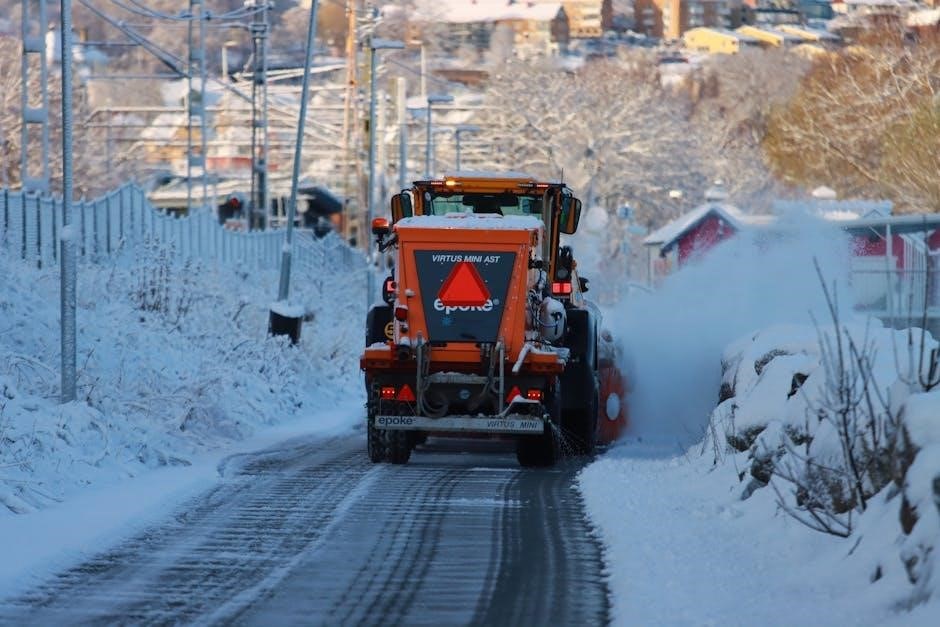
Initial Setup and Operation
Before initial use, thoroughly clean the ice maker. Then, fill the water reservoir to the indicated level. Finally, press the power button to begin the ice-making process. Enjoy your freshly made ice!
Adding Water to the Reservoir
Adding water to the reservoir is a crucial step in the ice-making process. First, locate the water reservoir inside your Igloo ice maker. Ensure the unit is unplugged before you begin. Carefully pour clean, potable water into the reservoir, paying close attention to the “max fill” line indicated inside the reservoir. Overfilling can cause malfunctions.
Use a pitcher or container to avoid spills. Periodically check the water level, especially during extended use. If the water level drops below the minimum, the ice maker might stop producing ice. Some models have a water level indicator. If your ice maker uses filtered water, consider using it for better ice quality. A clean reservoir is essential for optimal performance, so regularly empty and wipe it down. After filling, securely replace any covers or lids. Now, your Igloo ice maker is ready to start making ice!
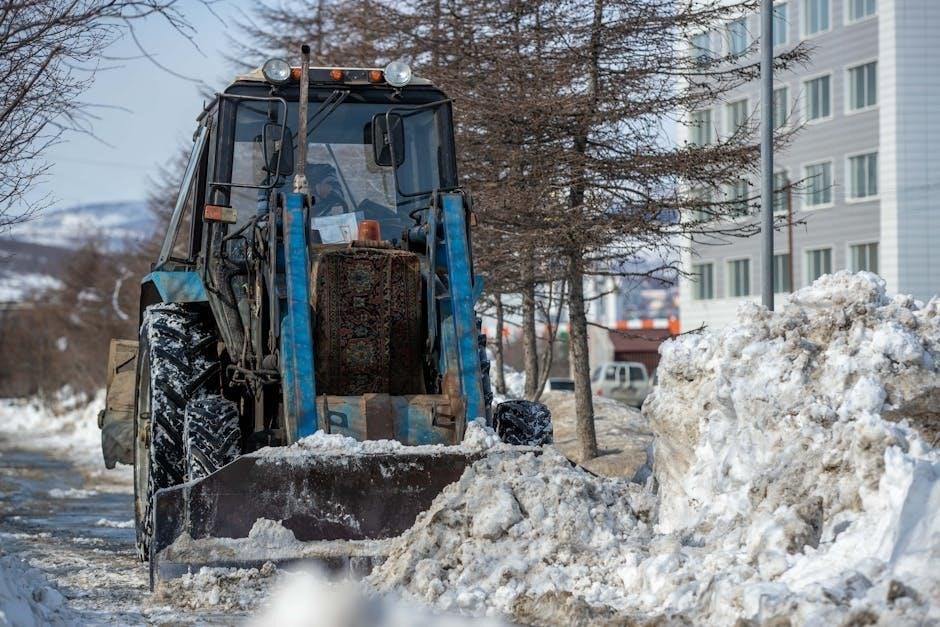
Starting the Ice Making Process
Once the water reservoir is filled, you’re ready to start the ice-making process. Plug your Igloo ice maker into a grounded electrical outlet. Press the power button to turn on the unit. Select your desired ice cube size, if applicable, using the control panel. Smaller cubes are quicker to produce but melt faster, while larger cubes take longer.
The ice maker will begin circulating water and freezing ice in the designated molds. The duration of each ice-making cycle depends on the model and selected cube size. Once the ice cubes are formed, they will automatically drop into the ice bin. Monitor the ice level to prevent overfilling. Some models feature an automatic shut-off when the bin is full. You can now enjoy fresh ice from your Igloo ice maker. Remember to empty the bin regularly to ensure optimal performance and prevent ice from melting and refreezing.
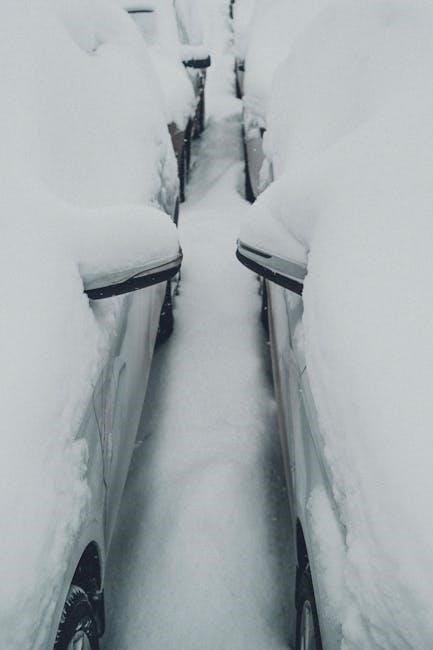
Troubleshooting Common Issues
Encountering problems? This section addresses common issues like the ice maker not making ice, ice cup problems, and error codes. Follow these troubleshooting steps to diagnose and resolve the issue effectively.
Ice Maker Not Making Ice
If your Igloo ice maker isn’t producing ice, several factors could be at play. First, ensure the unit is properly plugged into a functioning outlet and that there are no electrical power surges affecting it. Check the water reservoir; low water levels are a common culprit. Add water if needed.
Next, inspect the water lines for any blockages or air pockets. Air in the lines can prevent water from reaching the freezing mechanism. Sometimes, simply turning the unit off and restarting it can resolve minor glitches. If the issue persists, consider the ice cycle duration.
If the cycle seems unusually short, a faulty thermostat or sensor might be to blame. Another potential cause is a malfunctioning mold, which can prevent ice from forming correctly. Also, inspect the gears and motor inside the control module, as these components are known to fail.
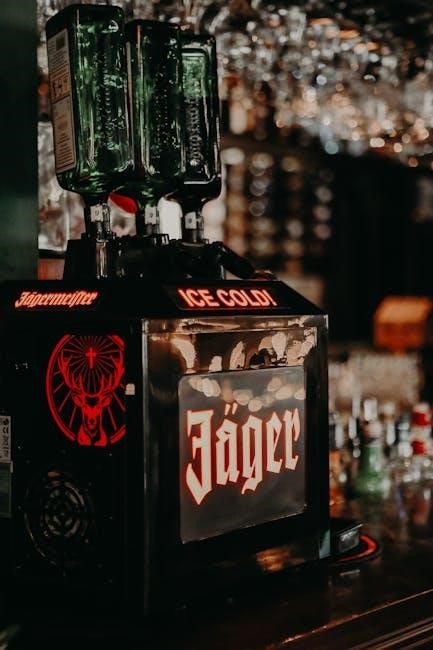
Ice Cup Issues
Encountering problems with the ice cup mechanism on your Igloo ice maker can be frustrating. One common issue is the cup remaining closed, even when ice is ready. This often requires manually forcing it open. A potential cause is a buildup of residue or mineral deposits hindering the cup’s movement.
Cleaning the cup and surrounding area with a vinegar solution can help dissolve these deposits. Letting the solution sit for an extended period, even overnight, might be necessary for stubborn buildup. Ensure the cup’s path is free from obstructions.
Another possibility is a malfunctioning micro switch responsible for triggering the cup’s opening. If the switch is faulty, it may not signal the cup to release the ice; Replacing the micro switch might be the solution. Inspect it for damage.

Flashing Lights and Error Codes
Flashing lights and error codes on your Igloo ice maker indicate underlying problems requiring attention. These codes serve as diagnostic tools, pinpointing the source of the malfunction. Consult your ice maker’s manual for a comprehensive list of error codes and their corresponding meanings.
A common cause is low water levels, triggering a sensor and prompting a warning light. Ensure the reservoir is adequately filled. Another possibility is an issue with the ice-making cycle, such as a prolonged cycle time or a failure to initiate.
Over time, components like the thermostat, gears, or motor can degrade. Unplugging the ice maker, draining the water, and waiting 30 minutes before restarting can sometimes reset the system. If the issue persists, further troubleshooting is necessary.
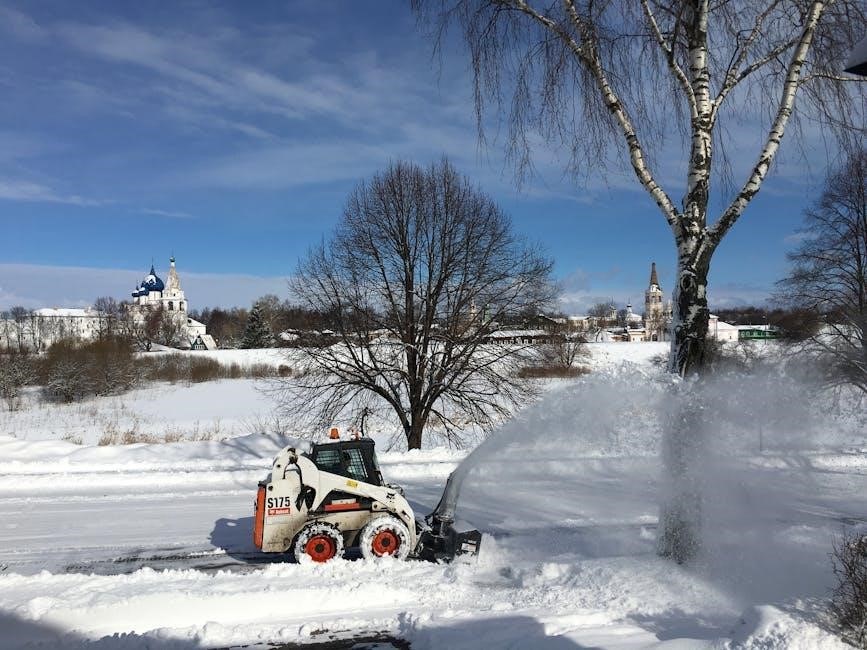
Maintenance and Cleaning
Regular maintenance and cleaning are crucial for optimal performance and longevity of your Igloo ice maker. Simple procedures can prevent issues and ensure fresh, clean ice every time. Let’s explore the best practices.
Regular Cleaning Procedures
To ensure your Igloo ice maker continues to produce fresh, clean ice, regular cleaning is essential. Begin by unplugging the unit from the power outlet. Next, drain any remaining water from the reservoir and ice bin. Prepare a cleaning solution using mild soap and warm water, or a diluted vinegar solution for tougher mineral buildup. Use a soft cloth or sponge to wipe down the interior surfaces, paying attention to the ice tray and water reservoir. Rinse thoroughly with clean water to remove any soap residue.
For the exterior, a simple wipe-down with a damp cloth is sufficient. Ensure all parts are completely dry before reassembling and plugging the ice maker back in. This routine maintenance prevents mold growth and maintains optimal performance, ensuring your ice is always safe and refreshing. Regular cleaning is a key factor in prolonging the life of your Igloo ice maker.
Cleaning the Condenser Fins
Maintaining clean condenser fins is crucial for the efficient operation of your Igloo ice maker. Dirty fins can restrict airflow, causing the unit to overheat and reduce ice production. Before you begin, always unplug the ice maker from the electrical outlet. Locate the condenser fins, typically found at the rear or side of the unit. Use a soft brush or a vacuum cleaner with a brush attachment to gently remove dust and debris. A straw brush is particularly effective for reaching tight spaces.
Avoid using water or harsh chemicals, as these can damage the sensitive components. For stubborn dirt, a can of compressed air can be used to blow away the buildup. Regular cleaning of the condenser fins ensures proper ventilation, preventing overheating and maintaining optimal performance. Aim to clean the fins every few months, or more frequently if the unit is used in a dusty environment. This simple maintenance step will significantly extend the lifespan of your ice maker and improve its efficiency.
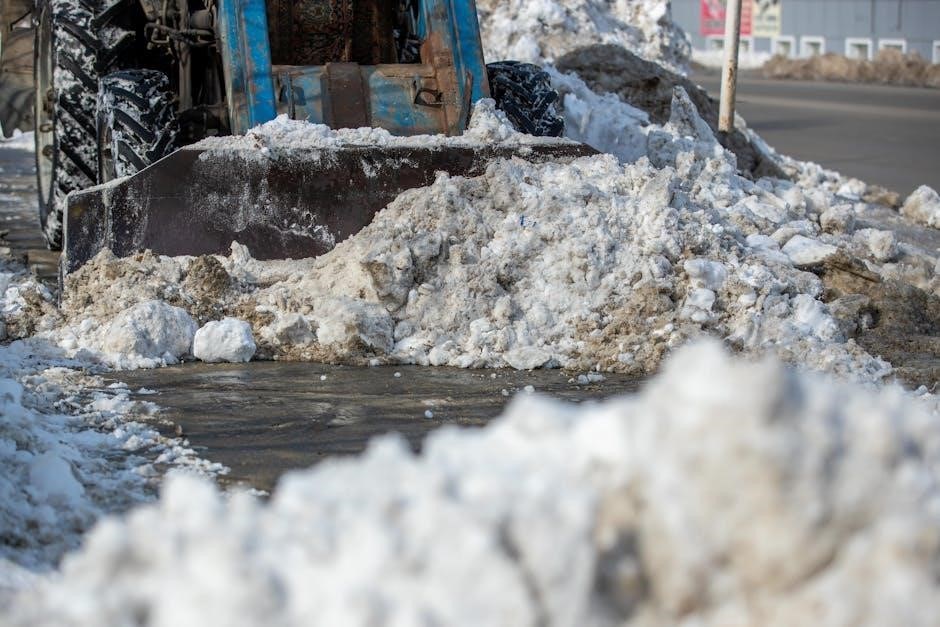
Repairing Igloo Ice Makers
This section guides you through diagnosing and repairing common issues with your Igloo ice maker. We’ll cover identifying faulty components and provide instructions for replacing the micro switch.
Identifying Faulty Components
When your Igloo ice maker malfunctions, pinpointing the faulty component is crucial for effective repair. Begin by observing the symptoms: is the fan running, but no ice is being produced? This could indicate issues with the mold, thermostat, gears, or the motor within the control module. Check the water inlet valve for proper function, ensuring water flows freely into the ice-making tray. Use a multimeter to test the continuity of electrical components, such as the micro switch, to determine if they are functioning correctly. Inspect the heating element responsible for releasing the ice cubes; a faulty element won’t release the ice. By systematically eliminating potential causes, you can isolate the defective component and proceed with the necessary replacement or repair, restoring your ice maker to optimal performance.
Replacing the Micro Switch
Replacing the micro switch in your Igloo ice maker is a straightforward repair. First, disconnect the ice maker from the power source for safety. Then, locate the micro switch, typically found within the control module. Carefully remove the outer cover, often secured with screws at the bottom. Take a picture of the wiring configuration before disconnecting the old switch. Disconnect the wires from the old micro switch, noting their positions. Install the new micro switch, ensuring the wires are reconnected in the exact same configuration as before. Secure the new switch in place. Reassemble the control module and outer cover. Finally, plug the ice maker back in and test its operation. Replacing the micro switch can often resolve issues with the ice-making cycle, restoring functionality to your appliance.
